Shrews are tiny mammals common across the US that can benefit gardens by eating pests like snails, slugs, and insects. However, when these small but aggressive creatures enter your home or garage, they can cause significant damage and potentially spread disease. This guide will help you understand effective shrew control methods and prevention techniques to keep these pests at bay.
Quick Picks: How to Get Rid of Shrews
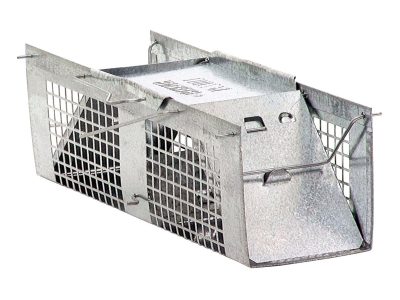
Best Humane Option
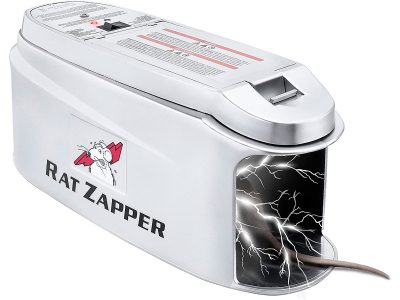
Most Effective
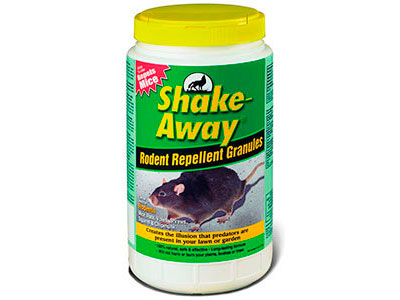
Best Repellent
How to Identify a Shrew Problem
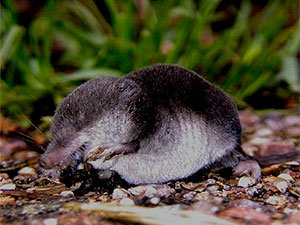
Common North American Shrew
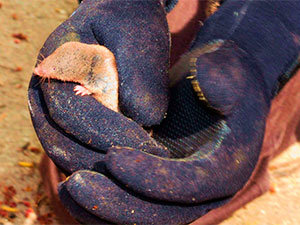
Shrew Size Comparison (Handle with Gloves)
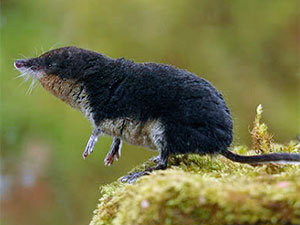
Wild Shrew in Natural Habitat
Before implementing any control measures, it’s important to confirm you’re dealing with shrews and not mice or other small rodents.
Visual Identification
Shrews have a pointed snout, tiny eyes, and velvet-like fur. They’re smaller than mice, typically 3-4 inches long including their tail.
Distinct Odor
Shrews leave a strong, pungent skunk-like smell from their anal glands, which they use as a defense mechanism and to mark territory.
Behavior Signs
Unlike mice, shrews don’t gnaw on wood or plastic. They’re insectivores and often take over abandoned mouse nests.
Most species of shrews are venomous and can deliver a painful bite. Never attempt to handle a shrew with bare hands. Their venom, while not typically dangerous to humans, can cause pain and swelling.
Shrew Prevention: Keep Them Out
The most effective way to deal with shrews is to prevent them from entering your home in the first place. Here are essential prevention methods:
- Seal All Entry Points Inspect your home’s exterior and seal any holes, cracks, or crevices larger than 1/4 inch. Pay special attention to areas where pipes or wires enter your home.
- Remove Attractive Habitats Clear brush piles, tall grass, and dense vegetation near your home’s foundation. Shrews prefer these protective covers when hunting for insects.
- Eliminate Food Sources Reduce insect populations around your home by keeping garbage secured and addressing any pest infestations promptly.
- Maintain a Buffer Zone Create a gravel barrier about 2-3 feet wide around your home’s foundation to discourage shrews from approaching.
Shrews are beneficial in garden areas as they consume insect pests, snails, and slugs. Consider tolerating their presence in outdoor spaces away from your home to maintain natural pest control.
Effective Trapping Methods for Shrews
If prevention hasn’t worked and you need to remove shrews that have already entered your home, trapping is the most effective control method. You’ll need to choose between humane live traps or kill traps depending on your preferences.
Havahart Live Animal Two-Door Mouse Cage Trap
Best Humane OptionHow Does It Work
How to Use
- Place the trap along known shrew pathways or against walls where activity has been observed
- Bait with peanut butter, earthworms, or small pieces of bacon
- Check the trap twice daily to prevent unnecessary stress to captured animals
- Relocate captured shrews at least 1 mile away in a suitable wooded habitat
- Humane capture method without harm to the animal
- Two-door design increases catch rate
- Solid construction for multiple uses
- Safe for the user - no risk of painful shrew bites
- Requires regular checking to prevent animal distress
- Relocation necessary, which may not be convenient
- Slightly more expensive than snap traps
Rat Zapper Electronic High-Voltage Shock Rat Trap
Most EffectiveHow Does It Work
How to Use
- Place the trap along known shrew pathways or near suspected entry points
- Bait with peanut butter or bacon inside the trap chamber
- Check the indicator light regularly to see if the trap has been triggered
- Dispose of deceased shrews without direct contact
- Quick and humane elimination
- No-touch disposal system
- Indicator light shows when trap has been activated
- Reusable for multiple catches
- Requires batteries
- More expensive than traditional traps
- Not designed for catch-and-release
Trap Placement Tips
Proper trap placement is crucial for success when trapping shrews:
Where to Place Shrew Traps
- Position traps along walls where shrew activity has been noticed
- For outdoor shrews, place traps near burrow entrances
- Target areas with signs of shrew activity (droppings or strong odor)
- Place multiple traps to increase your chances of success
Best Baits for Shrew Traps
Unlike mice, shrews are primarily insectivores and respond better to protein-based baits:
| Bait Type | Effectiveness | Notes |
|---|---|---|
| Earthworms | Excellent | Natural prey item for shrews, very attractive |
| Bacon | Very Good | Strong aroma appeals to shrews’ keen sense of smell |
| Peanut Butter | Good | Mix with rolled oats to prevent bait theft |
| Hot Dog Slices | Good | High protein content and strong smell |
| Loganberry Paste | Moderate | Good if shrews are targeting fruits in your garden |
| Pecan Paste | Moderate | Effective if shrews are attracted to nuts from feeders |
Pro Tip: For the most effective bait, mix peanut butter with rolled oats and apply to the trap’s trigger mechanism. This sticky mixture prevents bait theft and ensures the trap is triggered when the shrew attempts to eat it.
Effective Repellents for Shrew Control
Repellents can be useful for deterring shrews from entering specific areas of your property. While not as definitive as trapping, these products can help manage outdoor shrew populations.
Shake-Away Rodent Repellent Granules
Best RepellentHow Does It Work
How to Use
- Sprinkle granules in a perimeter around areas you want to protect
- Apply more heavily in areas with known shrew activity
- Reapply after heavy rain or every 30-60 days
- Use as a preventative measure before shrew problems develop
- Natural deterrent without harmful chemicals
- Safe for use around gardens and landscaping
- Easy application with no special equipment needed
- Works on multiple rodent species
- Requires regular reapplication
- Less effective in very rainy conditions
- May not work on all shrew species
Electronic Repellers
Electronic repellers emit sonic or ultrasonic pulses that irritate shrews and may drive them away from treated areas.
Electronic repellers show mixed results against shrews. They work best as part of a comprehensive approach rather than as a standalone solution. For severe infestations, trapping is recommended.
Understanding Shrew Venom

Unlike most small mammals, shrews produce venom in their saliva glands. This unique characteristic is important to understand when dealing with these creatures.
Venom Purpose
Shrews use venom primarily to immobilize prey like insects, worms, and small rodents. The venom allows them to capture prey larger than themselves.
Effect on Humans
Shrew venom typically causes pain, swelling, and redness at the bite site in humans. Symptoms usually resolve within a few days without treatment.
Safety Precautions
Always wear thick gloves when handling traps or working in areas with potential shrew activity to prevent accidental bites.
Professional Pest Control Options
If your shrew problem persists despite DIY efforts, or if you have a large infestation, consider hiring a professional pest control service. Professionals have:
- Specialized equipment and commercial-grade products
- Experience identifying entry points you might miss
- Knowledge of local shrew species and behaviors
- Integrated pest management approaches
When selecting a pest control service, look for companies with specific experience in small mammal control, particularly shrews.
Frequently Asked Questions
Are shrews protected by law?
Some shrew species are protected in certain regions. Before implementing lethal control measures, check with your local wildlife agency for regulations. Humane trapping and relocation is often permitted even for protected species.
Do shrews carry diseases?
Shrews can carry various diseases and parasites, including hantavirus, leptospirosis, and salmonellosis. While transmission to humans is rare, it’s important to take precautions when dealing with shrews or their droppings.
How do I distinguish between shrews and mice?
Shrews have pointed snouts, tiny eyes, and velvet-like fur. They’re typically smaller than mice with proportionally shorter tails. Shrews also leave a distinctive musky odor. Unlike mice, shrews don’t gnaw on wood or plastic materials.
Are shrews beneficial to have in my yard?
Shrews can be beneficial in garden areas as they consume many insect pests, including grubs, snails, and slugs. However, they can become problematic when they enter homes or damage garden plants. Consider tolerating them in outdoor areas away from your home.
What time of year are shrews most active?
Shrews are active year-round but may be more likely to enter homes during fall and winter seeking warmth. They’re also active during both day and night, as they need to eat frequently due to their high metabolism.
Final Thoughts on Shrew Control
Dealing with shrews requires a combination of prevention, exclusion, and targeted control methods. Remember that these small mammals play a beneficial role in controlling insect populations in natural environments, so focus on keeping them out of your home rather than eliminating them from your property entirely.
For persistent problems, combining multiple approaches—sealing entry points, setting appropriate traps, and using repellents—typically yields the best results. When in doubt, consulting with a wildlife professional can help you develop an effective strategy that addresses your specific situation while respecting local wildlife regulations.
